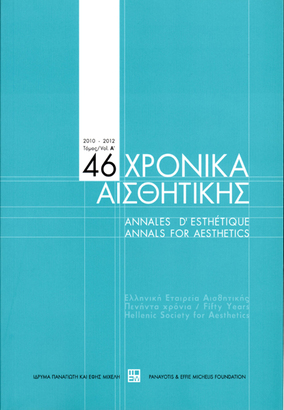Κατοικίες φιλοσόφων : Wittgenstein και Heidegger
Part of : Χρονικά αισθητικής : ετήσιον δελτίον της Ελληνικής Εταιρείας Αισθητικής ; Vol.45, 2009, pages 159-187
Issue:
Pages:
159-187
Parallel Title:
Philosophers’ dwellings : Wittgenstein and Heidegger
Author:
Abstract:
This paper discusses the relationship of Martin Heidegger and Ludwig Wittgenstein to architecture, through their dwellings. The two philosophers, who stand at the two ends of 20th century philosophy, Heidegger closer to Phenomenology and Existentialism, Wittgenstein to the Vienna circle and Analytic Philosophy, present an interesting case study for comparison on many levels.Born both in 1889, Wittgenstein in Austria and Heidegger in Lower Germany, they lived two distinct but also occasionally converging lives, as in the case of two huts which were the locus of their thinking and writing. These were Wittgenstein’s retreat in Skjolden, in a Norwegian fjord, where he wrote Tractatus Logico-Philosophicus in 1914, and Heidegger’s hut in Todtnauberg, on the slopes of the Black Forest where for most of his life he withdrew from the city whenever he could. The two huts, as well as two urban residences, Heidegger’s house in Freiburg and Wittgenstein sister’s house in Vienna, have intrigued architects enough to devote articles and monographs on both of them.For Heidegger the hut was crucial, more than his city house, both because of his own belief to its importance in the development of his thought, and also because of the influence it exerted on architectural theorists, such as Norberg-Schulz, Frampton and Pallasmaa. The hut was not only a place to distance himself from busy university life, but also the inspiration for his philosophy after Time and Being, as expressed in the threefold unity of existence in Building Dwelling Thinking.In the case of Wittgenstein, the small cabin which he built on his own, was a necessary getaway from Cambridge, in order to compose in peace his impressive diatribe in philosophy, but never his home, though he stayed there on several occasions. Of far greater importance was his involvement with the design of his sister’s urban residence, which throws light in the development of his thought in the interim between the Tractatus and the Philosophical Investigations.Their concerns with building radically influenced the evolution of their philosophy, by grounding it on matters of actual dwelling in a specific place, and hence by relating the meaning of dwelling to that of building (Heidegger), and the notion of construction to that of language (Wittgenstein) . The nature of this involvement is also reflected on their very different lifestyles. Heidegger, by being rooted all his life in the countryside of the fatherland (with its uncanny Nazi affiliations in the ’30s), sought to establish an authentic identity of belonging, related to a specific topos. In contradistinction, Wittgenstein, after giving away his significant inheritance, lived almost a nomadic life, without ever establishing for himself a home, travelling endlessly in Europe and the USA. Their different lives fulfil, in different ways, Nietzsche’s definition of the philosopher as a wanderer: Wittgenstein, the centrifugal wanderer, always ready to leave home and travel, Heidegger, the centripetal one, venturing out to long mountain walks in a pendulum-like motion, always to return to the hearth of home. Similar such life patterns are observed in the domestic scale, Heidegger establishing almost the same daily ritual in his town and country homes, Wittgenstein relishing in the open ended, multi-choice paths, as exemplified in the spatial arrangement of his sister’s house. Thus, movement and grounding, the homebound and the nomadic, are the characteristic traits of life, thought and architecture of two of the most prominent 20th century philosophers.
Subject:
Subject (LC):
Keywords:
αρχιτεκτονική
Notes:
Η διάλεξη πραγματοποιήθηκε στις 4 Μαρτίου 2009, Περιέχει εικόνες




